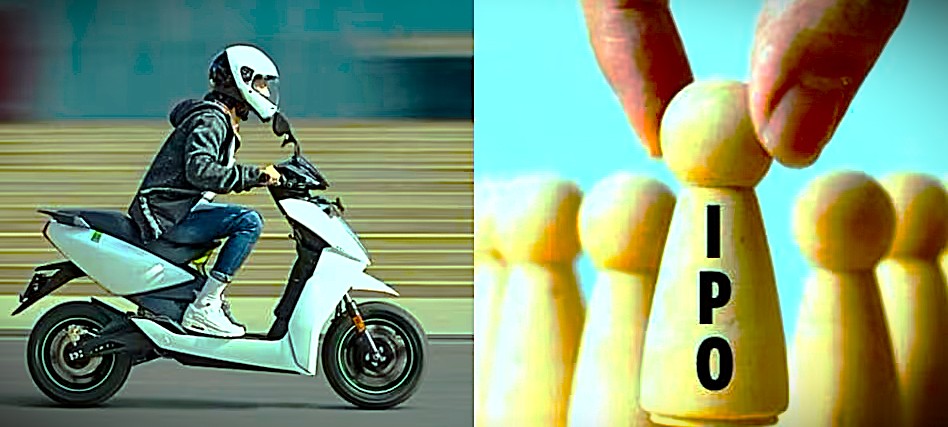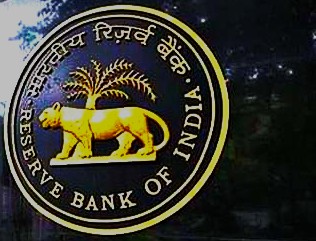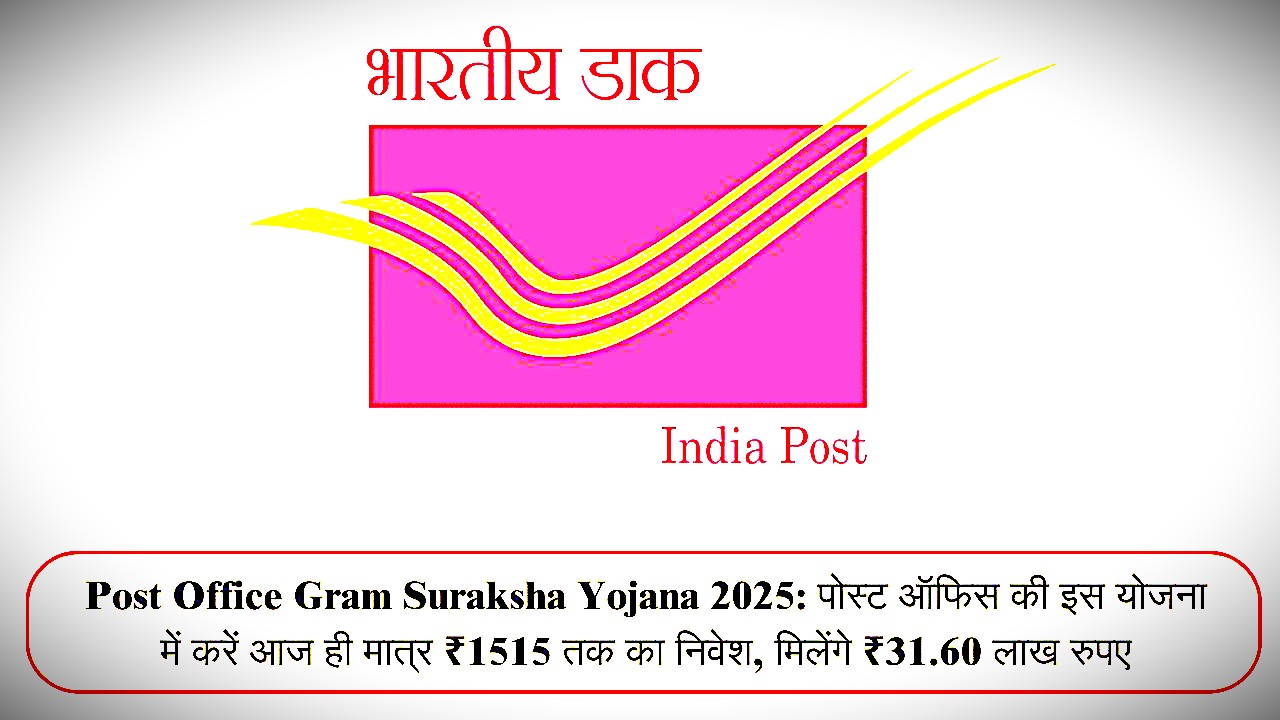Ather Energy, a prominent player in India’s electric two-wheeler market, is set to make its debut on the stock exchanges with an Initial Public Offering (IPO) scheduled from April 28 to April 30, 2025. This move marks a significant milestone for the company and presents investors with a unique opportunity to participate in the burgeoning electric vehicle (EV) sector.
IPO Overview:
- Issue Size: Approximately ₹3,100 crore, comprising a fresh issue of equity shares.
- Price Band: ₹304 to ₹321 per share.
- Anchor Investor Bidding: Opens on April 25.
- Public Bidding: From April 28 to April 30
- Listing Date: Expected in early May 2025.
Ather Energy IPO: Business Overview
Ather Energy, founded in 2013 by IIT graduates Tarun Mehta and Swapnil Jain, has emerged as a leading player in India’s electric two-wheeler (E2W) market. Positioned as a premium EV scooter manufacturer, Ather is known for its end-to-end control over product development. The company designs and builds electric scooters, battery packs, charging infrastructure, software, and accessories entirely in-house, allowing it to maintain a high standard of quality and innovation.
As a pure-play EV company, Ather builds its products from the ground up in India, demonstrating a strong commitment to local manufacturing, innovation, and sustainability. Its flagship electric scooters, including the Ather 450X and the recently launched Rizta series, have gained popularity for their performance and smart features. In FY24, Ather sold 1,09,577 electric scooters, ranking it as the third-largest E2W player in India by volume.
Ather’s comprehensive ecosystem enhances the customer experience through proprietary technologies such as the Atherstack software suite, which includes 64 smart features, and the Ather Grid—its dedicated fast-charging network. Backed by major investor Hero MotoCorp, which holds a 32% stake, and has raised over USD 160 million in funding, Ather is well-positioned for long-term growth in India’s fast-evolving EV landscape.
Ather Energy IPO: Industry Overview
The Indian electric two-wheeler (E2W) market is experiencing rapid growth, driven by a mix of economic, policy, and environmental factors. In FY 2023 alone, the country saw the sale of 8,40,000 electric two-wheelers, marking a 33% year-on-year increase. E2W penetration reached 5.1% by FY 2024 and is projected to grow significantly to 35–40% by FY 2031. This acceleration is fueled by rising fuel prices, increasing environmental awareness, and strong government incentives—most notably the Faster Adoption and Manufacturing of Hybrid and Electric Vehicles (FAME) scheme.
Against this backdrop, Ather Energy is positioning itself as a key player in the evolving landscape. While the company has established a solid presence in India, it is now actively pursuing international expansion. Ather has begun exporting to Nepal and is exploring opportunities in Southeast Asian markets such as Indonesia, Thailand, and Vietnam, where E2W adoption is already gaining momentum. These regions present an attractive market due to their urban congestion, rising fuel costs, and growing eco-conscious consumer base.
Furthermore, Ather is eyeing entry into Europe, aiming to tap into environmentally aware customers and strengthen its global brand visibility. This international foray is not just about growth—it also serves as a strategic move to diversify its revenue streams and reduce dependence on Indian government policies and subsidies.
Ather’s global ambitions, backed by strong domestic momentum, position it well to capitalize on the ongoing electric mobility revolution.
Ather Energy: Manufacturing Plants and Capacity Utilization
Ather Energy currently operates a state-of-the-art manufacturing facility in Hosur, Tamil Nadu. This plant has an annual production capacity of 4,20,000 electric two-wheelers (E2Ws) and 3,79,800 battery packs. It houses two E2W assembly lines and three semi-automated battery assembly lines, with a fourth line currently under development. The facility boasts impressive operational efficiency, achieving an assembly time of just 48 seconds per E2W and 43 seconds per battery pack.
Despite this robust setup, capacity utilization remains a challenge. In FY 2024, utilization dropped to 29% for both E2Ws and battery packs, down from 40% in FY 2023. This underutilization is largely attributed to constraints in battery production and a slower-than-expected ramp-up in demand.
To address these challenges and prepare for future growth, Ather is investing in a new manufacturing facility—Factory 3.0—at Chhatrapati Sambhajinagar in Maharashtra. Phase 1 of this facility, targeted for completion by March 2027, will add capacity for 5,00,000 E2Ws annually. Eventually, the plant is expected to scale up to 10 lakh units per year, bringing Ather’s total production capacity to 14 lakh E2Ws annually.
To support this expansion, the company is focusing on automation upgrades and enhancing in-house manufacturing capabilities, particularly for battery packs. These efforts aim to streamline operations, improve capacity utilization, and ensure Ather is well-positioned to meet rising demand in the evolving electric mobility landscape.
Ather Energy IPO: Details and Offer Structure
Ather Energy is set to make its public debut with an Initial Public Offering (IPO) that includes a fresh issue of equity shares worth INR 3,100 crore, along with an offer for sale (OFS) of 2,20,00,766 shares by existing shareholders. The IPO also includes a special reservation for shareholders of Hero MotoCorp, one of Ather’s key promoters.
The offer is structured to cater to various investor categories, with 75% of the issue allocated to Qualified Institutional Buyers (QIBs), 15% reserved for Non-Institutional Investors (NIIs), and the remaining 10% earmarked for Retail Investors. Additionally, certain portions are reserved for eligible employees and shareholders of Hero MotoCorp (HMCL), reflecting the company’s effort to reward and involve existing stakeholders in its growth journey.
Promoted by co-founders Tarun Mehta and Swapnil Jain, alongside Hero MotoCorp, Ather has garnered strong backing from notable institutional investors. Key shareholders include Caladium Investments Pte Ltd and the National Investment & Infrastructure Fund (NIIF), indicating solid institutional confidence in Ather’s long-term potential.
With its shares set to be listed on both the National Stock Exchange (NSE) and the Bombay Stock Exchange (BSE), the IPO is anticipated to attract significant interest from both retail and institutional investors. Given the rapid expansion of India’s electric vehicle (EV) sector, Ather’s IPO is poised to become a benchmark for future EV-related listings, reflecting investor appetite for clean mobility solutions and innovation-driven companies.
Ather Energy: Financial Performance and Growth Trends
Ather Energy has experienced significant revenue growth over the last three fiscal years, though profitability remains a challenge. In FY 2022, the company posted revenue of INR 408.9 crore, which surged over fourfold to INR 1,780.9 crore in FY 2023. However, revenue slightly dipped to INR 1,753.8 crore in FY 2024, reflecting a plateau in sales growth momentum.
Despite this revenue expansion, Ather continues to operate at a loss, with net losses widening from INR 344.1 crore in FY 2022 to INR 864.5 crore in FY 2023, and further to INR 1,059.7 crore in FY 2024. This is mirrored in its net margin, which has fluctuated from -84.15% in FY 2022 to -48.54% in FY 2023, before worsening again to -60.42% in FY 2024. Similarly, the Return on Capital Employed (ROCE) declined to -118.68% in FY 2024 from -69.94% the previous year.
On an operational level, EBITDA margins have improved modestly, moving from -62.0% in FY 2022 to -36.0% in FY 2024. Meanwhile, the company has been gradually deleveraging, with the debt-to-equity ratio improving from 1.62 in FY 2022 to 0.88 in FY 2024.
In terms of sales volume, Ather saw a remarkable 373% growth in vehicles sold in FY 2022, followed by 294% in FY 2023. However, growth slowed significantly to just 19% in FY 2024, signaling the need for strategic recalibration in demand generation and market penetration.
Ather Energy: Use of IPO Proceeds
Ather Energy plans to strategically utilize the net proceeds from its upcoming IPO’s fresh issue to support its long-term growth and operational expansion. The total fundraising will be directed toward five key areas aimed at enhancing manufacturing capacity, strengthening financial stability, and boosting innovation and brand visibility.
The largest portion of the proceeds—INR 927.2 crore—will be allocated to capital expenditure for setting up a new electric two-wheeler (E2W) manufacturing facility in Chhatrapati Sambhajinagar, Maharashtra. This factory will significantly expand Ather’s production capacity and support its scale-up plans in the coming years.
To improve its financial leverage, the company also intends to use INR 378.2 crore for the repayment or pre-payment, in full or in part, of certain existing borrowings. This move will help reduce debt and strengthen the balance sheet.
Ather is also committed to advancing innovation through significant investments in research and development (R&D), with INR 750 crore earmarked for this purpose. This will enable the company to focus on product development, battery technology, and software integration, ensuring it remains competitive in the rapidly evolving EV market.
Additionally, INR 300 crore is planned for marketing initiatives aimed at brand building, market expansion, and customer acquisition, both in India and abroad.
The remaining proceeds will be used for general corporate purposes, offering Ather the flexibility to meet operational needs and support its growth strategy.
This strategic allocation reflects Ather’s vision to become a leading player in the global electric mobility space.
Ather Energy: Competitive Landscape and Market Position
Ather Energy operates in a dynamic and increasingly competitive Indian electric two-wheeler (E2W) market, where it competes with major players such as Ola Electric, Hero Electric, TVS Motor, and Bajaj Auto. Among these, Ola Electric currently leads the segment with an aggressive pricing strategy and holds a dominant 42.4% market share.
Despite this, Ather has successfully carved out a niche for itself with a focus on premium, technology-driven electric scooters. As of FY 2024, Ather holds a respectable 12.2% market share, positioning itself as a strong contender in the mid-to-premium segment of the E2W market.
Unlike Hero Electric, which dominates the budget segment through an expansive dealership network, Ather follows a direct-to-consumer (D2C) approach. This model emphasizes digital engagement, enhanced customer experience, and strong brand loyalty. In contrast to legacy players like TVS and Bajaj—who have deep financial reserves and offer a blend of internal combustion engine (ICE) and electric vehicles—Ather is a pure-play electric vehicle company.
With no ICE product portfolio to fall back on, Ather relies on external funding and its upcoming IPO to fuel its expansion plans. Its growth strategy is centered on research and development (R&D), investment in charging infrastructure, and continued product innovation. By focusing on performance, design, and smart features, Ather aims to differentiate itself as an innovation-led EV brand.
This clear strategic positioning allows Ather to compete effectively while targeting a more tech-savvy, urban consumer base that values performance and sustainability.
Ather Energy: Sales, Service, and Customer Retention
cities in India, along with three centers in Nepal. These centers serve as key touchpoints for customers, offering product demos, test rides, and immersive brand experiences.
To ensure a strong after-sales network, Ather has established 191 service centers, strategically located using data-driven analysis to maximize accessibility and convenience. In January 2024, the company introduced ExpressCare centers at select locations, offering one-hour service for routine maintenance—addressing a key concern in EV ownership and enhancing customer satisfaction.
Ather places a strong emphasis on digital integration. The Ather App allows customers to book service appointments, track vehicle diagnostics, and monitor service progress in real-time. This seamless digital engagement improves the overall ownership experience and reinforces brand trust.
Beyond product and service, Ather focuses on building a loyal customer base through community engagement and lifestyle-driven marketing. The company frequently organizes community rides, user meetups, influencer-led campaigns, and interactive retail events that foster a sense of belonging among Ather owners. These initiatives not only enhance customer retention but also strengthen Ather’s image as a modern, customer-centric brand.
Through its omnichannel retail strategy, tech-enabled service ecosystem, and vibrant community engagement, Ather Energy continues to deepen customer relationships while scaling its footprint in the competitive electric two-wheeler market.
Ather Energy IPO: Strengths
Ather Energy’s upcoming IPO is underpinned by several strategic strengths that position the company for continued growth in the rapidly expanding electric vehicle (EV) market. These strengths are key drivers of its competitive advantage and long-term potential.
- India’s First EV Fast-Charging Network: Ather boasts over 2,600 Ather Grid chargers across India, establishing a first-mover advantage in the crucial area of EV infrastructure. This extensive charging network not only supports Ather’s products but also elevates the EV adoption experience nationwide.
- High-Margin Software Revenue: Ather generates approximately 6% of its total revenue from software-related services, primarily through Atherstack subscriptions. With an impressive 56% EBITDA margin from this segment, it provides a high-margin, recurring revenue stream that adds financial stability to its business.
- Strong R&D Focus: Ather places significant emphasis on innovation, with 48% of its workforce dedicated to research and development. The company has filed 273 patents, ensuring it retains control over critical in-house technologies that power its electric scooters and related services.
- Premium Brand Positioning: Unlike many budget-focused rivals, Ather competes in the high-performance EV segment, offering premium products that appeal to a tech-savvy and environmentally conscious consumer base.
- Massive Scale-Up with Factory 3.0: Ather’s upcoming Factory 3.0 in Maharashtra will increase its production capacity to 14 lakh units annually, enabling the company to meet growing demand and scale operations rapidly.
These strengths collectively position Ather Energy for sustainable growth and market leadership in the evolving EV landscape.
Ather Energy IPO: Risks and Challenges
While Ather Energy’s IPO presents significant growth potential, it also faces several risks and challenges that could impact its long-term success.
- High Battery Dependency & No In-House Cell Production: Ather relies on imported lithium-ion cells for its electric scooters, making the company vulnerable to global supply chain disruptions and price fluctuations. This dependency could affect both production costs and the ability to scale efficiently, especially as demand for EVs continues to rise.
- Limited Financial Muscle Compared to Industry Giants: Ather competes with well-established players like Hero Electric, Bajaj Auto, TVS Motor, and Ola Electric, all of whom possess significantly larger cash reserves and extensive dealership networks. Ather’s relatively smaller financial base could limit its ability to compete on price, marketing, and distribution.
- High R&D Spending, Yet Not Profitable: Despite investing INR 236.5 crore in research and development (FY24), Ather remains a loss-making company. Its continued focus on R&D without achieving profitability raises concerns about its long-term sustainability and ability to generate consistent returns for investors.
- EV Financing & Resale Value Challenges: The absence of structured financing options for electric vehicles and the uncertainty around their resale value can make EV ownership less attractive for customers, posing a barrier to mass adoption.
- Scaling Ather Grid: While Ather has over 2,600 charging stations, scaling the network further is challenging. Expanding Ather Grid requires third-party partnerships and navigating land, regulatory, and power supply issues, which could slow down growth.
These risks highlight the complexities Ather faces as it seeks to expand its market share in a competitive and evolving EV landscape.
Ather Energy IPO: Conclusion
Ather Energy’s IPO presents an exciting investment opportunity in India’s rapidly growing electric vehicle (EV) market. Positioned as a technology leader, Ather is at the forefront of India’s EV revolution, with strong growth plans, a growing market presence, and strategic partnerships to support its expansion. The company’s commitment to innovation, exemplified by its focus on high-performance electric scooters, premium brand positioning, and extensive charging infrastructure, sets it apart from competitors.
The IPO offers a chance for investors to tap into the long-term growth potential of the EV sector, especially as the Indian government’s supportive policies and increasing environmental awareness drive demand. Ather has already garnered strong investor backing, further adding credibility to its future prospects. Additionally, its plans for scaling up production capacity through its new manufacturing facility (Factory 3.0) are expected to support its ambition of becoming a significant player in the global EV space.
However, profitability remains a key concern. Despite robust revenue growth, Ather continues to incur financial losses, raising questions about the sustainability of its business model. Regulatory changes, competition from well-capitalized industry giants, and challenges around scaling its charging infrastructure also pose risks.
For strategic investors looking to invest in the future of mobility, Ather’s IPO offers high growth potential but also presents inherent risks. Investors should carefully assess these factors before making a decision, keeping in mind the evolving landscape of the Indian EV ecosystem.















Wealth Management
Ather Energy’s IPO is a pivotal moment for India’s electric vehicle industry, showcasing the company’s growth and potential. Their commitment to local manufacturing and innovation sets a strong example for sustainable development. The popularity of models like the Ather 450X and Rizta series highlights the increasing demand for smart and efficient electric scooters. With support from major investors like Hero MotoCorp, Ather is poised to lead the EV revolution in India. How will their IPO impact the broader adoption of electric vehicles in the country?